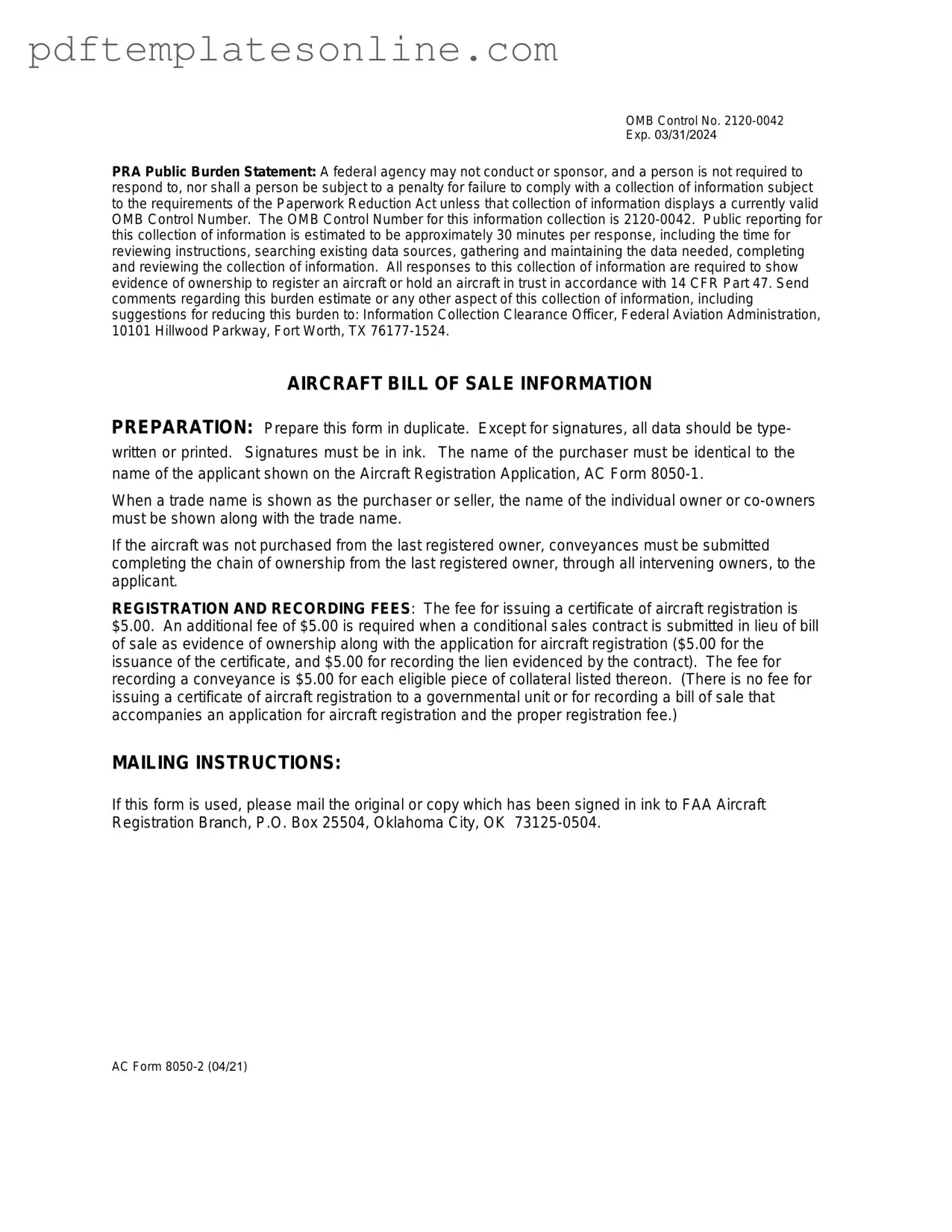Filling out the Aircraft Bill of Sale AC 8050-2 form can seem straightforward, but many individuals make critical mistakes that can lead to complications. One common error is failing to provide complete information about the aircraft. Every detail matters, including the make, model, and serial number. Omitting this information can result in delays or even rejection of the form.
Another frequent mistake is neglecting to include the correct date of sale. This date is essential for establishing ownership and may affect the registration process. A simple oversight in this area can create confusion and potentially lead to disputes down the line.
Many people also overlook the importance of signatures. Both the seller and the buyer must sign the form. If one party forgets to sign, the document is incomplete and cannot be processed. It is crucial to ensure that all required signatures are present before submission.
Inaccurate or inconsistent information can lead to significant issues. For example, the names of the buyer and seller must match exactly as they appear on their identification documents. Discrepancies can raise red flags during the verification process, causing unnecessary delays.
Another mistake often made is the failure to retain a copy of the completed form. Keeping a copy for personal records is vital. Without it, individuals may struggle to prove the transaction occurred, which could complicate future dealings or disputes regarding the aircraft.
Lastly, some individuals forget to check for additional requirements specific to their state or local regulations. While the AC 8050-2 form is a federal document, local laws may impose additional stipulations that must be followed. Ignoring these can lead to further complications that could have been easily avoided.
